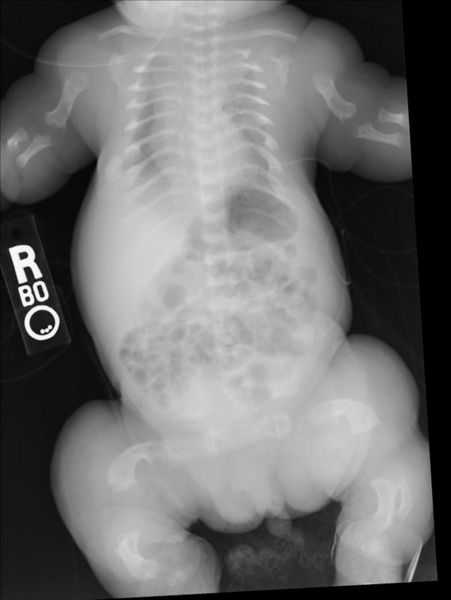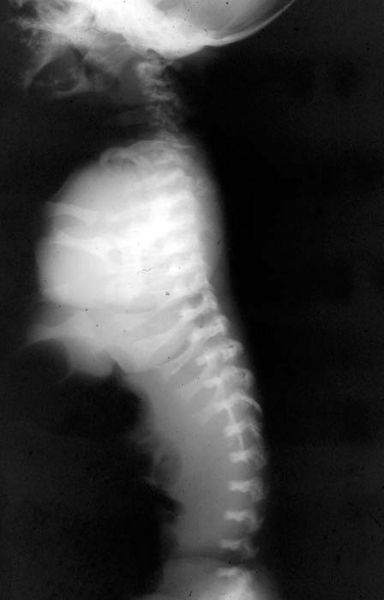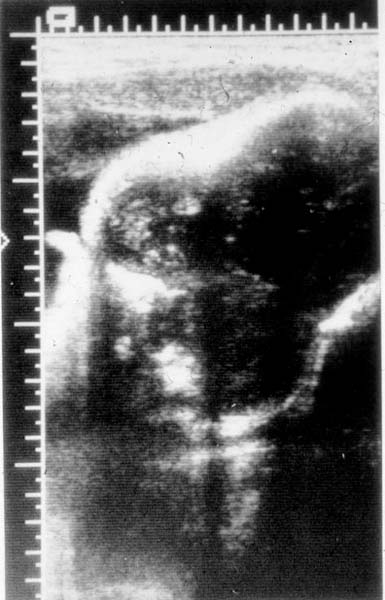Thanatophoric dysplasia
| Thanatophoric dysplasia | |
| ICD-10 | Q77.1 |
|---|---|
| OMIM | 187600 |
| DiseasesDB | 29403 |
| MeSH | D013796 |
Editor-In-Chief: C. Michael Gibson, M.S., M.D. [1]
Overview
Thanatophoric dysplasia is a severe inherited skeletal disorder characterized by extremely short limbs and folds of extra skin on the arms and legs.
Symptoms
Infants with this condition have disproportionately short arms and legs with extra folds of skin. Other signs of the disorder include a narrow chest, small ribs, underdeveloped lungs, and an enlarged head with a large forehead and prominent, wide-spaced eyes.
Subtypes
Infants with type 1 thanatophoric dysplasia also have curved thigh bones and flattened bones of the spine (platyspondyly).
An unusual head shape called craniosynostosis ("cloverleaf skull") is seen with type 2 thanatophoric dysplasia.
Prognosis
The term thanatophoric is Greek for "death bearing". Infants with this condition are usually stillborn or die shortly after birth from respiratory failure; however, some children have survived into childhood with significant medical help. These children are severely mentally handicapped due to a variety of brain abnormalities and have difficulty breathing on their own.
Incidence/Prevalence
This condition affects about 1 in 60,000 birth.
Diagnosis
Patient #1
Patient #2
Patient #3:Cloverleaf skull
See also
References
External links


